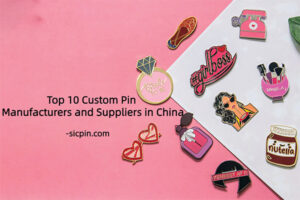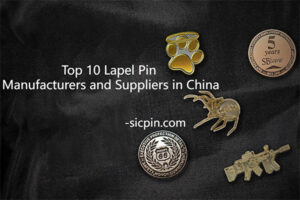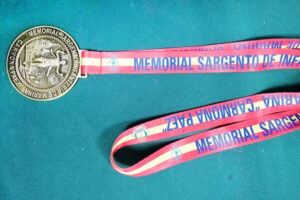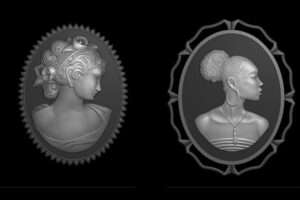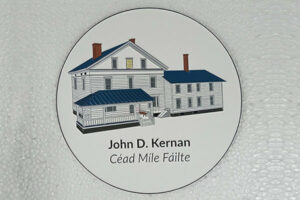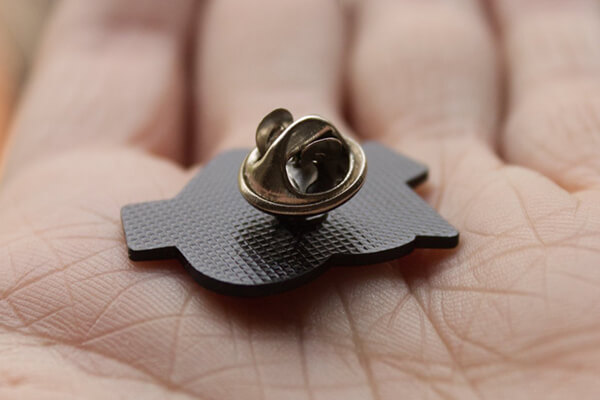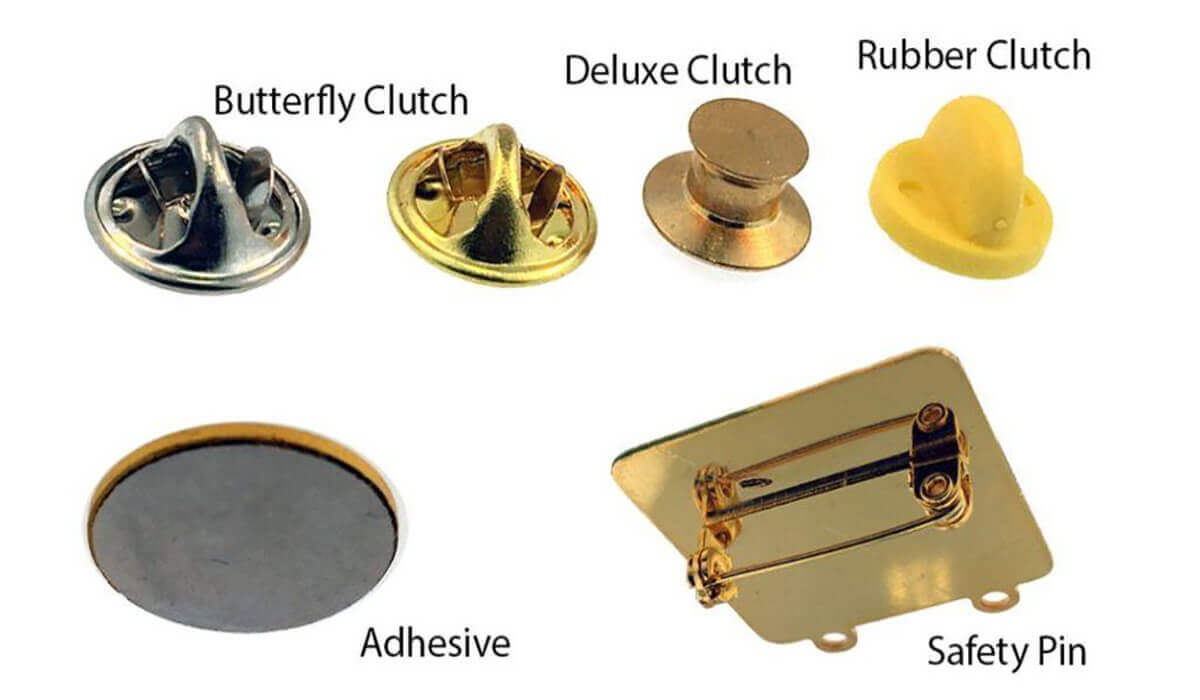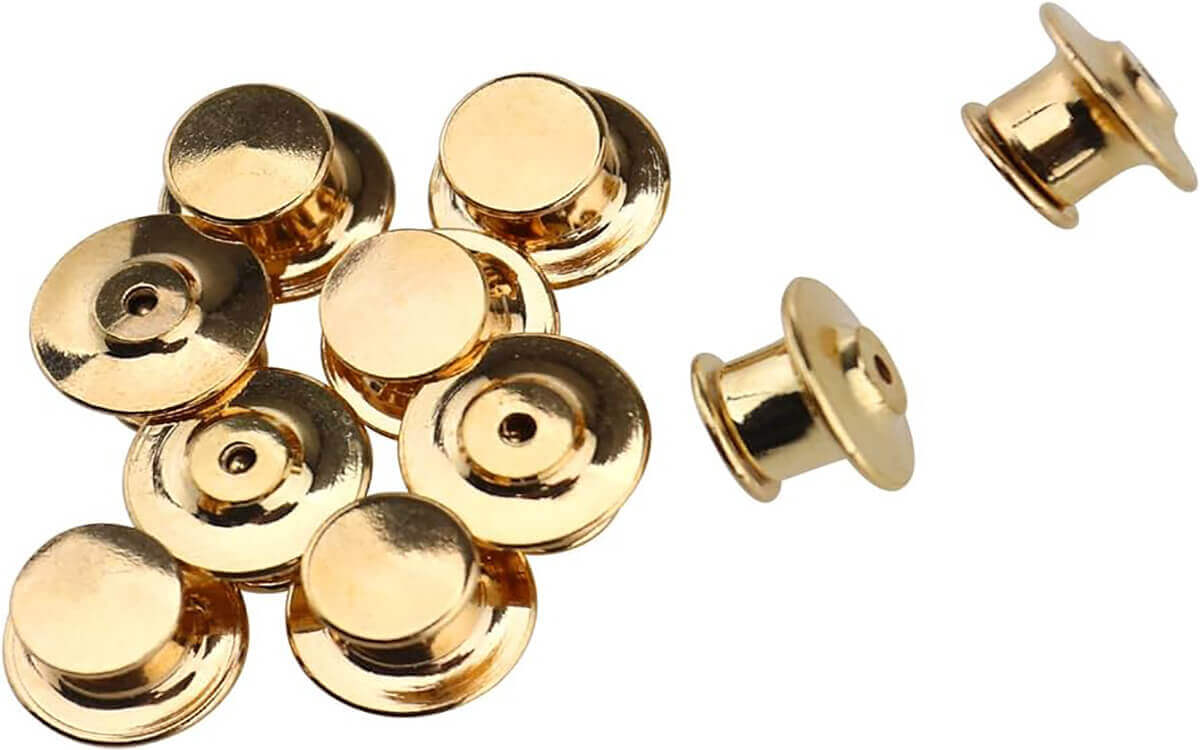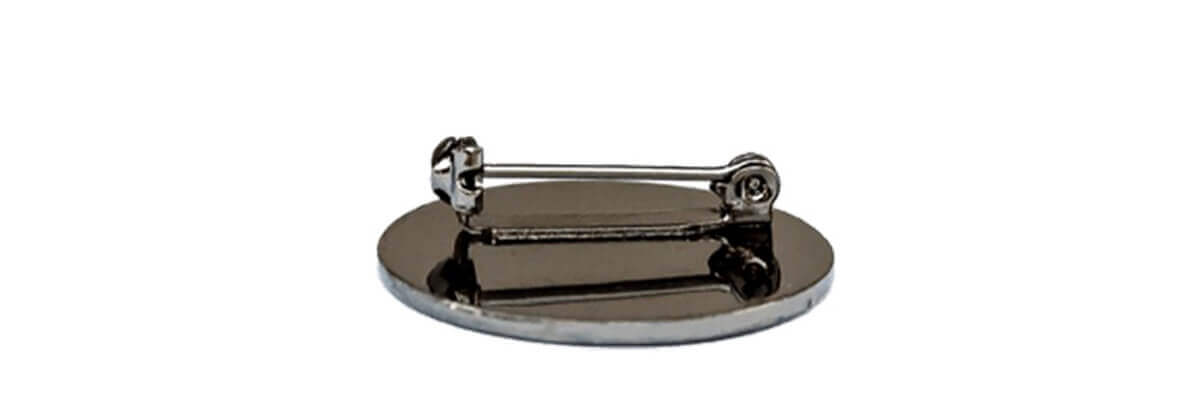The enamel pin back holds the enamel pin securely to the surface of your choice. While the traditional butterfly clutch is widely recognized, there are a range of other back options available. In this article, I will outline the various enamel pin back options and how to choose one of them. Read on to learn more.
1. 14 types of enamel pin backs
Before purchasing an enamel pin back, you should understand what options are available to you. In fact, there are many types of enamel pin backs. Below we have compiled 14 common backs for your reference.
(Another related product guide: Enamel Pin Backs: All You Need to Know)
1)Military or butterfly clutch
Military clutch, also known as butterfly clutch, is the standard backing commonly used for most pins. This is an easy-to-use backing option that matches the plating of the pins. This backing style provides a moderate level of security while keeping the pin lightweight.
To install the pin, place the back side on the needle after passing it through the fabric. Once in place, the backing prevents the pins from falling out and ensures they stay securely in place. Military clutches are a popular choice due to their simplicity and effectiveness in holding the pin securely on a variety of surfaces.
2) PVC clutch bag
PVC clutches function similarly to military clutches. Once the needle is threaded, you can put a PVC clutch on it to hold the needle in place. Compared to military clutches, PVC clutches are lightweight, cost-effective, and highly durable. They are a practical option for ensuring your pins are securely attached. However, it’s worth noting that PVC clutches may not have the same style or professionalism as military clutches.
Depending on your aesthetic goals, you may prefer the military clutch look of certain pins. Ultimately, the choice between a PVC clutch and a military clutch depends on your specific needs, preferences, and the desired look of your enamel pins.
3) Luxury clutch bag
The Deluxe Clutch is a backing option that has similarities to PVC and military clutches. However, it offers a premium finish, unlike other products. This luxury clutch features a polished flat top finish for a sophisticated look. It is very similar to a flat lockback but does not include a locking mechanism.
This type of clutch is designed to match the overall aesthetic of the pin and provide a comfortable fit even when worn for extended periods of time. If you’re looking for a high-quality finish that complements your enamel pin while ensuring long-lasting comfort while wearing it, then a deluxe clutch is an excellent choice for you.
4) Magnetic clutch
Magnetic clutches stand out as a unique choice among pin-back clutches due to their puncture-free design. This feature makes it very popular, especially for those who want to avoid damaging the fabric to which it is attached. One of the main advantages of a magnetic clutch is its ability to hold the pin securely without puncturing the fabric. This is especially beneficial for delicate or valuable materials that require extra care.
However, it is important to note that magnetic clutches may not be suitable for use with thick fabrics. The strength of the magnet may be hampered by the thickness of the fabric, compromising its ability to hold the pin securely in place. If you’re wearing thinner fabrics or materials you don’t want punctures, a magnetic clutch can provide a convenient and fabric-friendly alternative.
(Another related product guide: Top 10 Hard Enamel Pins in 2023)
5) Bar magnet
Bar magnet clutches function similarly to standard magnet clutches but with the addition of two magnets. This type of clutch is usually used with a larger horizontal pin. To secure the pin, two magnets are placed on either side of the pin. These magnets create a strong magnetic attraction that effectively holds the pin in place. Magnetic rod clutches are especially useful for larger pins that require additional support to maintain a secure connection.
The presence of two magnets enhances the holding power and ensures that the pin remains in place. If you have larger horizontal pins that require reliable, secure tightening, a bar magnet clutch is a suitable choice.
6) Ball lock clutch
Ball-lock backing is a premium backing option commonly used on high-end pins. Its distinguishing feature is the secure locking mechanism. When you insert the pin into the needle, you’ll hear a satisfying click indicating that it’s securely locked into place.
To remove the pin, you need to pull on the ball located on top of the backing to unlock and release it. The main advantages of ball lock backing are its superior security and stylish appearance. It provides a secure hold, ensuring your pins stay securely connected.
However, it’s worth noting that ball-locking backings are typically more expensive than other options and more challenging to use due to the locking mechanism.
If you prioritize safety and beauty and are willing to invest in quality backing, ball lock backing is a great choice for your enamel pins.
7) Flat head locking clutch
Flathead locking clutches function similarly to ball locking systems, with the main difference being the shape of the unlocking mechanism. Flathead locking clutches use a flathead to unlock, rather than a ball. Like ball-locking clutches, flathead-locking clutches provide enhanced security for your enamel pins.
Once the pin is inserted and locked into place, you can use the flat head to unlock and remove it. However, it’s worth noting that both flathead-locking clutches and ball-locking clutches can be more expensive than other options.
Additionally, due to their specific unlocking mechanics, they may require some practice to use effectively. If you prioritize maximum security on enamel pins and are willing to invest in quality backing, a flathead locking clutch is a solid option worth considering.
(Another related product guide: Top 10 Soft Enamel Pins in 2023)
8) Button clutch
9) Safety pin clutch
This clutch uses traditional safety pins to secure your pins. This is easy to use, but more expensive than other clutch options.
10) Swivel
Screw-in back closures are known for their superior security when securing pins to the fabric. This type of backing has a central hole through which the needle can pass. To install the screw back cover, you simply screw it into place. It’s worth noting that screw-downbacks aren’t as widely available as other options, and finding manufacturers that offer them can sometimes be challenging.
11) Bent leg clutch
12) Rod or rod clutch
The stem clutch has a long pin that inserts vertically into the fabric. This type of backing requires two entry points: one on the front side of the fabric and one on the front side where the needle exits. To secure the dowel, a cap is added. Dry clutches are often worn by professionals, especially men.
In addition to adding a unique style to the pin, it also enhances its security. However, it is important to consider that the lever clutch is quite large and requires two holes in the fabric to secure properly. Despite its unique style and increased safety, the lever clutch may not be suitable for all pin attachments due to its size and requirement of two entry points.
13) Tie clip
14) Tie nails
Tie pin backing is a versatile option commonly used on ties, providing a unique and stylish alternative to traditional tie clips. Similar to a military clutch, the tie pin backing functions by holding pins through the fabric. However, tie nails feature a short chain with a rod at the end, adding a unique decorative touch to the overall design.
This backing style makes it easy to secure your tie and ensures it stays in place all day long. It offers a classic yet sophisticated look, suitable for formal occasions or adding a touch of elegance to everyday attire.
(Another related product guide: Magnet Vs Pins: Which Is Better for an Enamel Pin?)
2. How to choose a pin backs
Choosing a pin attachment often comes down to personal aesthetic, but it might be a good idea to think about where your pin is expected to be worn and who will be wearing your custom pin. For example, some pin attachments are great for certain garments, while others are better at protecting against rough wear and tear.
Carefully considering your choice of attachments can go a long way toward creating a custom pin that suits your needs. Here are some quick tips about each pin type to help you decide:
- Simple rubber or butterfly clutches are adequate for everyday wear on shirts and blazers but are also more prone to slipping or accidentally releasing the pin in rough conditions.
- Jewelry Clutches and Luxury Clutches increase the perceived value of the pin and hold it to the surface more securely than standard options, which makes them particularly suitable for thick clothing, such as parkas or other thick outerwear.
- Magnetic backings are a common choice for school pins because the absence of sharp objects is ideal for avoiding injury.
- Safety pins may look old-fashioned, but they’re actually ideal for hat pins.
(Another related product guide: Enamel Pins VS. Button Pins: What is the Difference?)
3. Frequently asked questions
Below are answers to frequently asked questions about pin back.
1) Which is better, metal backing or rubber backing?
Your choice of metal or rubber backing depends on where the pin will be used and your budget. Metal backing is more professional and stylish than rubber backing. They are also more secure because they can have internal mechanisms. Rubber backings are cheaper and more durable than metal backings, but are less secure.
Metal backings offer more versatility and options than rubber backings. Just one or two rubber backings. In contrast, there are countless metal backings, including basic military backings, accessory backings, long needle backings, and more.
2) What kind of needle back should I use?
The pin backing board you use depends on the purpose of the pins and your budget. If you have a lower budget, a rubber backing is ideal. They are also better suited for pins placed in comfort zones. For example, if you are placing the pin around a shoulder strap, hat, or belt, you will need a rubber backing. The rubber backing is flexible and more comfortable than metal backing.
If you have a larger budget, locking pins are ideal. They are also suitable for pins placed on items that are frequently moved or used frequently. The locking pin will provide you with security ensuring that the pin does not fall out. Magnet backing is a popular choice due to its ease of use and affordable price.
They also advertise their comfort. Because they are flat and thin, they perform well in tight and confined areas. Magnet backing is also ideal if you’re using pins on expensive fabrics. They allow you to secure the pin without puncturing the material.
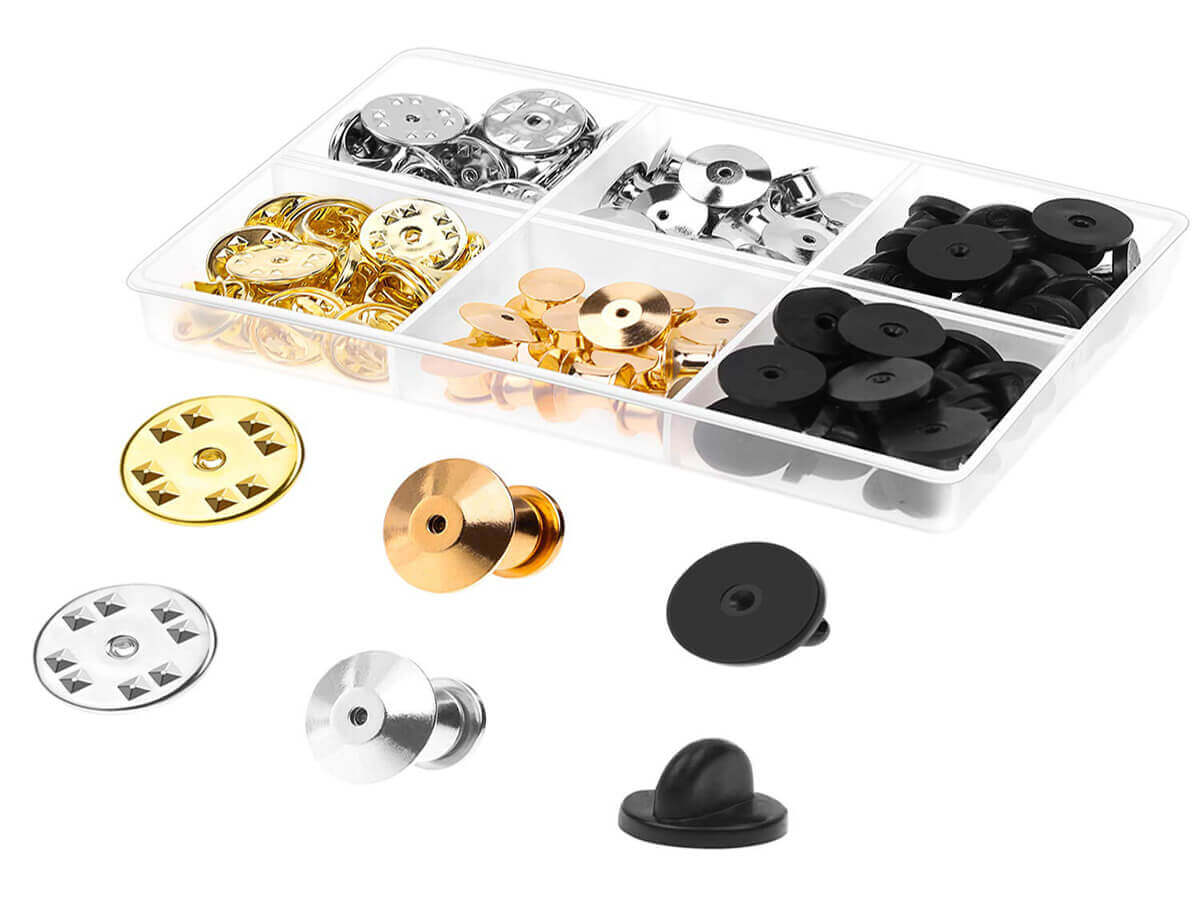
4. Conclusion
How useful was this post?
Click on a star to rate it!
Average rating 5 / 5. Vote count: 3
No votes so far! Be the first to rate this post.

